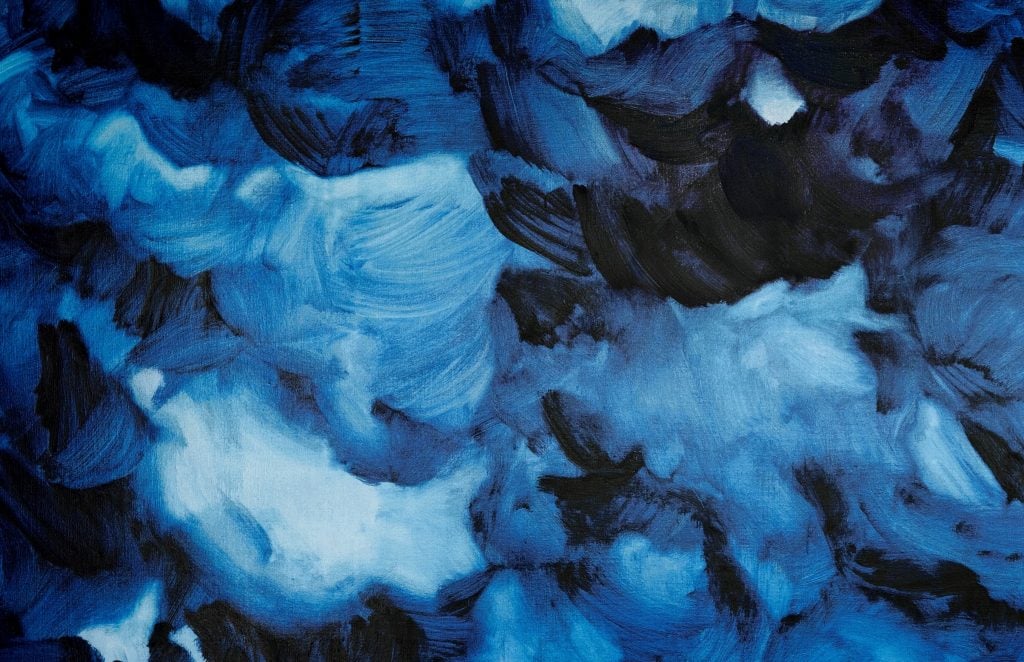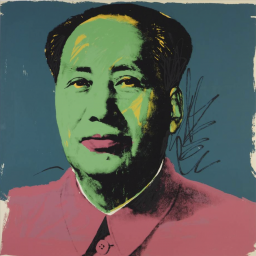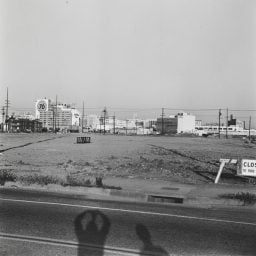Artnet’s spring Post-War and Contemporary Art premier sale has now launched online, offering a diversity of genres and price points. Featuring major art-historical figures including Pablo Picasso and Yves Klein, as well as contemporary talents, such as Jonathan Lasker and Zhao Zhao, the sale presents an opportunity to collect works by top-caliber artists that have been carefully vetted by Artnet Specialists.
We spoke with Specialist Jason Rulnick about a selection of exciting, multidisciplinary artworks on offer, and how each reveals its artist’s revolutionary approach to painting.
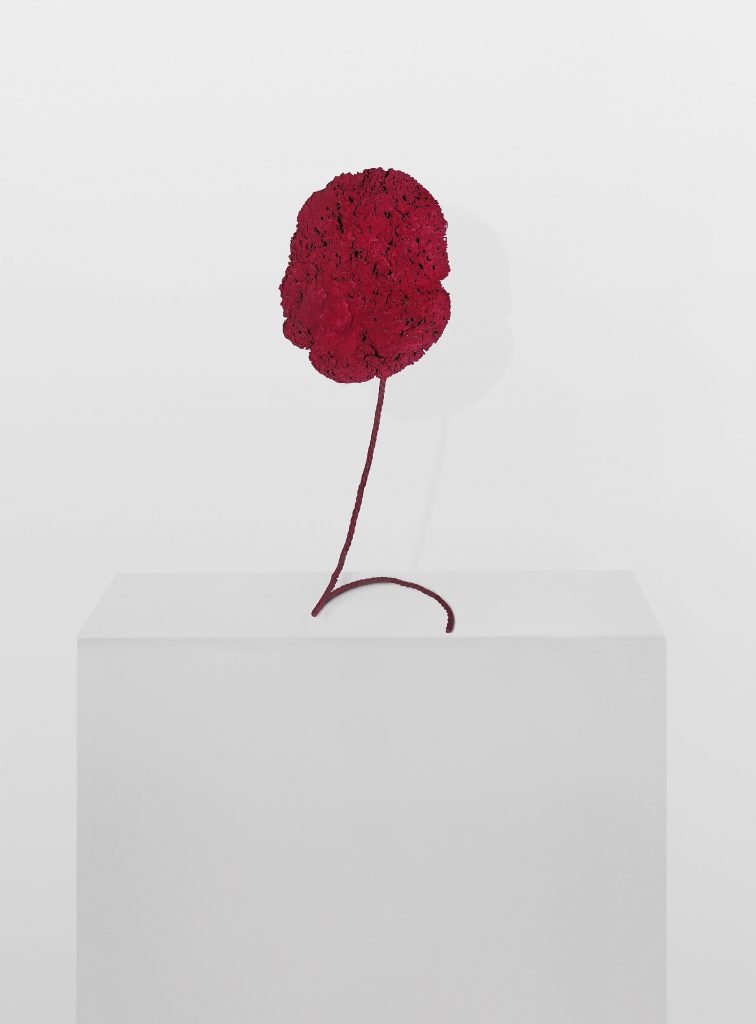
Yves Klein, Untitled Pink Sponge Sculpture (SE 199) (1961). Est. $1,500,000–$2,000,000.
Throughout his varied oeuvre, Yves Klein was a maverick whose work represented a rigorous rejection of the formalities of art. This work, Untitled Pink Sponge Sculpture (SE 199) (1961), is no exception. With his iconic International Klein Blue (IKB) monochromatic paintings, Klein rejected not only the concept of representational art but also the traditions of painting entirely.
With this sculpture, he went one step further by removing the hand of the artist from the act, allowing the natural sponge to do the work as it slowly absorbs the deep pink pigment. His painting becomes sculpture while artistry becomes artistic freedom, effectively severing the artist from the work. This is an extremely rare artwork that exists as one of just seven known examples in pink.
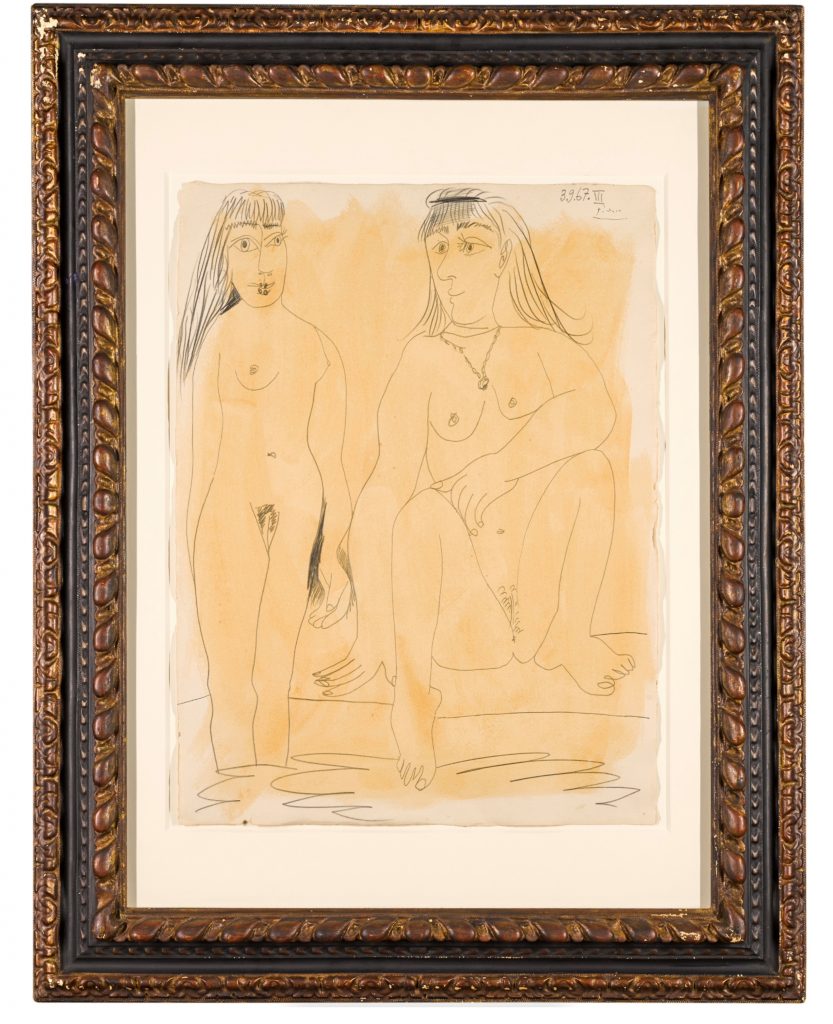
Pablo Picasso, Deux nus debout (1967). Est. $350,000–$450,000.
Pablo Picasso, an artist who lived through two world wars, inspired several generations of future artists not just with his exquisite sensibility in constructing a picture, but also by the discipline and diversity of his practice. The year 2023 is a year of commemoration in the art world, marking 50 years since the artist’s passing.
It’s fitting, then, that we have the opportunity to offer this unique work on paper in our current sale. Titled Deux nus debout, this work was completed in 1967 and represents his fascination with neoclassical subjects. This work, executed with masterful draughtsmanship with a gouache wash, also points to the inspiration Picasso found in the work of the Old Master paintings—whether El Greco, Velázquez, Rembrandt, or Titian—with its concentration on the nude female figure, portrayed in deft and fluid lines.

Larry Poons, 81G-5 (1981). Est. $60,000–$80,000.
Postwar art was exemplified by the international movement toward gestural abstraction. These artists stayed close to traditional materials but removed the need for subject matter. And though they made paintings, artists at this time began to consider their work more akin to sculpture, questioning how a work might occupy its space, and how it will be considered by its audience. Artists such as Larry Poons and Vivian Springford both pursued a career of experimentation, with their artworks becoming vestiges of their respective practices. In the current Post-War and Contemporary Art sale, Larry Poons’s 81G-5 from 1981 marks his signature application of paint as he poured, threw, and splashed it onto the surface of his canvases, then further incorporated materials such as rope, foam, and rubber. His paintings are layered, thickly textured, and command the presence of an object.
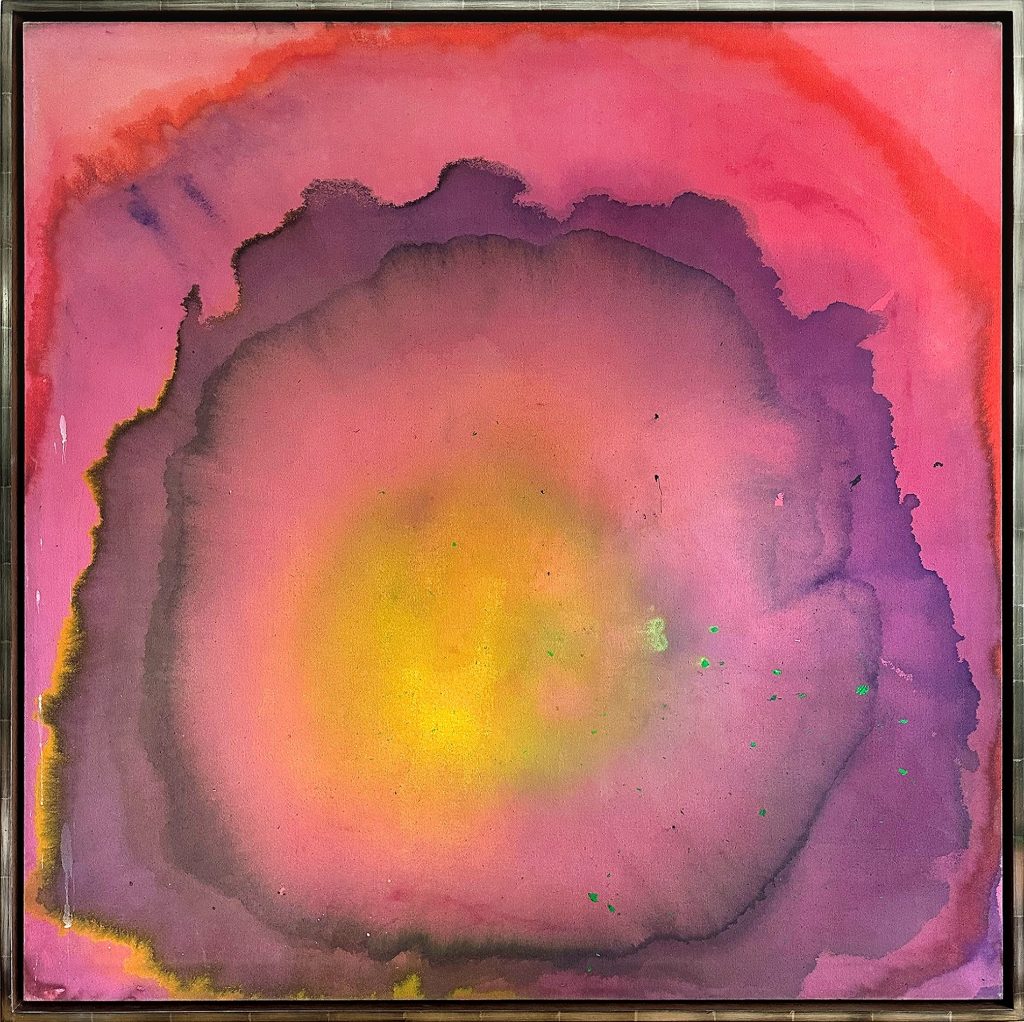
Vivian Springford, Untitled (Expansionist Series) (1972–84). Est. $80,000–$100,000.
Vivian Springford’s Untitled from 1972–84 represents a similar exploration of materiality, from the perspective of Abstract Expressionism. Starting in 1965, Springford developed her signature “chromatic pools,” of which this is a perfect example; the artist would pour watered-down pigments to create washes and floods of pooling color. These mesmerizing marks evoke energy, depth, and movement, while simultaneously leaving no visible marks of the artist’s hand.
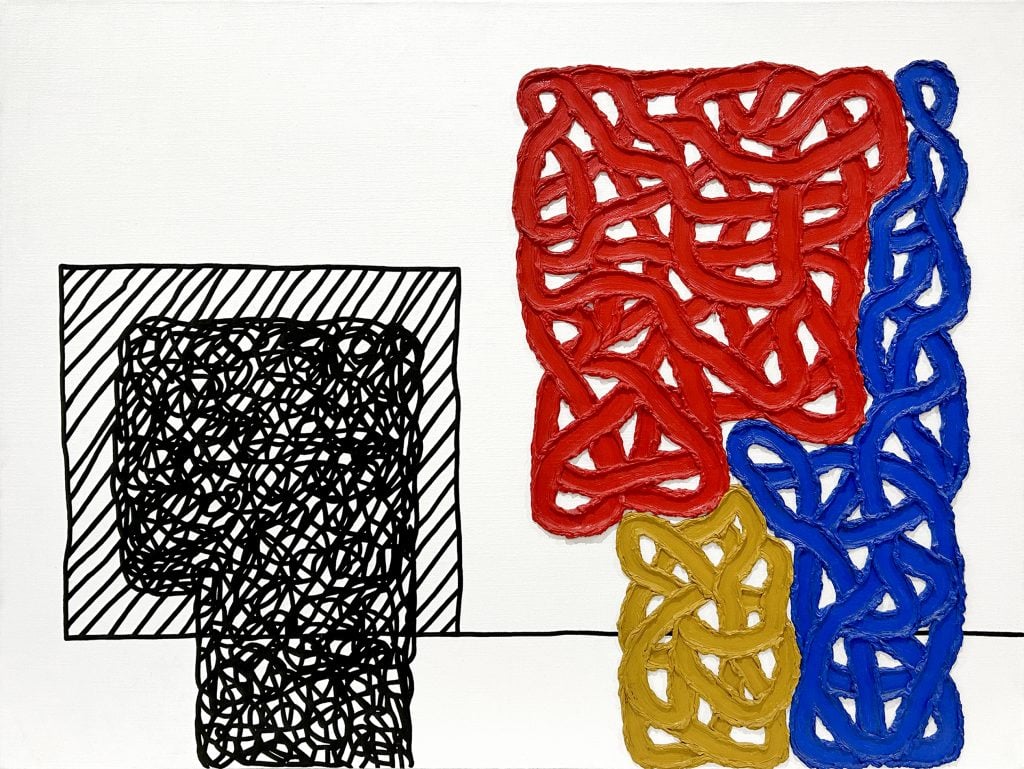
Jonathan Lasker, Little Head Talking to Big Head (2005). Est. $50,000–$70,000.
Entering the modern era, abstraction collided with a more graphic approach to composition at the hands of artists such as Jonathan Lasker. The artist’s signature approach utilizes recurring motifs throughout his pictures. Inspired by the painstakingly layered work of Jackson Pollock and Philip Guston, Lasker’s work is known for its biomorphic shapes, geometric patterns, and gestural graffiti marks within a shared pictorial space.
Lasker has become a pillar of Postmodernist painting as he investigates the various qualities of painting itself. As he stated: “I often think of my paintings as a form of image kit or perhaps as jigsaw puzzles, which offer components of painting as clues pointing the viewer, not to a finished narrative…but rather to a self-awareness of how one construes a painting.” Take Little Head Talking To Big Head (2005), a work whose title and forms suggest a very loose narrative. The extreme impasto of Lasker’s brushwork places the hand of the painter front of mind, but simultaneously reveals nothing about Lasker’s intentions—leaving the rest to the viewer’s interpretation.
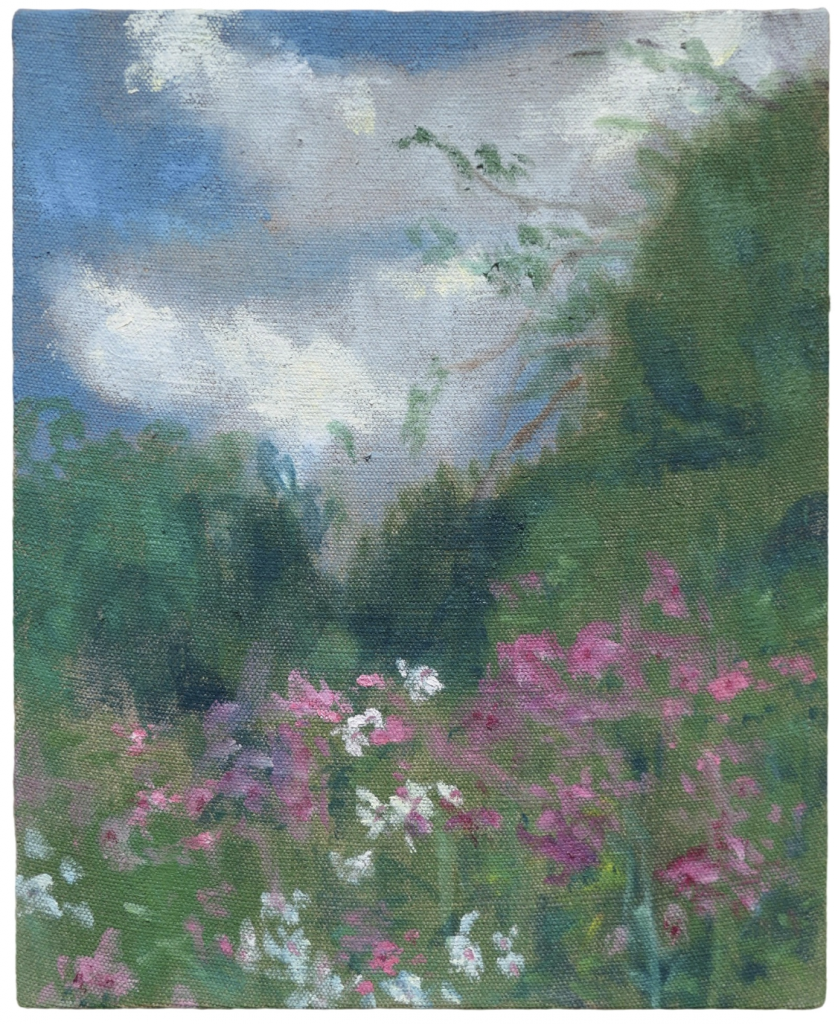
Merrill Wagner, Untitled (#5) (2012). Est. $25,000–$35,000.
From the simplicity of Merrill Wagner’s plein-air landscapes such as Untitled (#5) from 2012, one could not predict her incredibly varied career. Wagner moved to New York in the late 1950s and became known for large, hard-edge abstract paintings. In the 1960s she immersed herself in the world of sculpture and nontraditional materials, becoming known for painted wall reliefs made of salvaged steel and linen that were inspired by the likes of Eva Hesse. Despite their extreme abstraction and industrial materiality, Wagner nevertheless conjured ideas of organic forms through her use of natural colors.
The present work maintains the same core values, as union of material and paint: on linen, the surface’s natural grain adds to the portrayal of a more traditional landscape. Like her other intimate landscape works, it conveys a peaceful and majestic view of nature, reflecting the artist’s roots in the Pacific Northwest.
Wagner married Minimalist artist Robert Ryman in 1969, and while she is the more quietly acknowledged artist (as is unfortunately normally the case for heteronormative artist couples), Wagner is represented by David Zwirner Gallery and is finally receiving more acclaim.
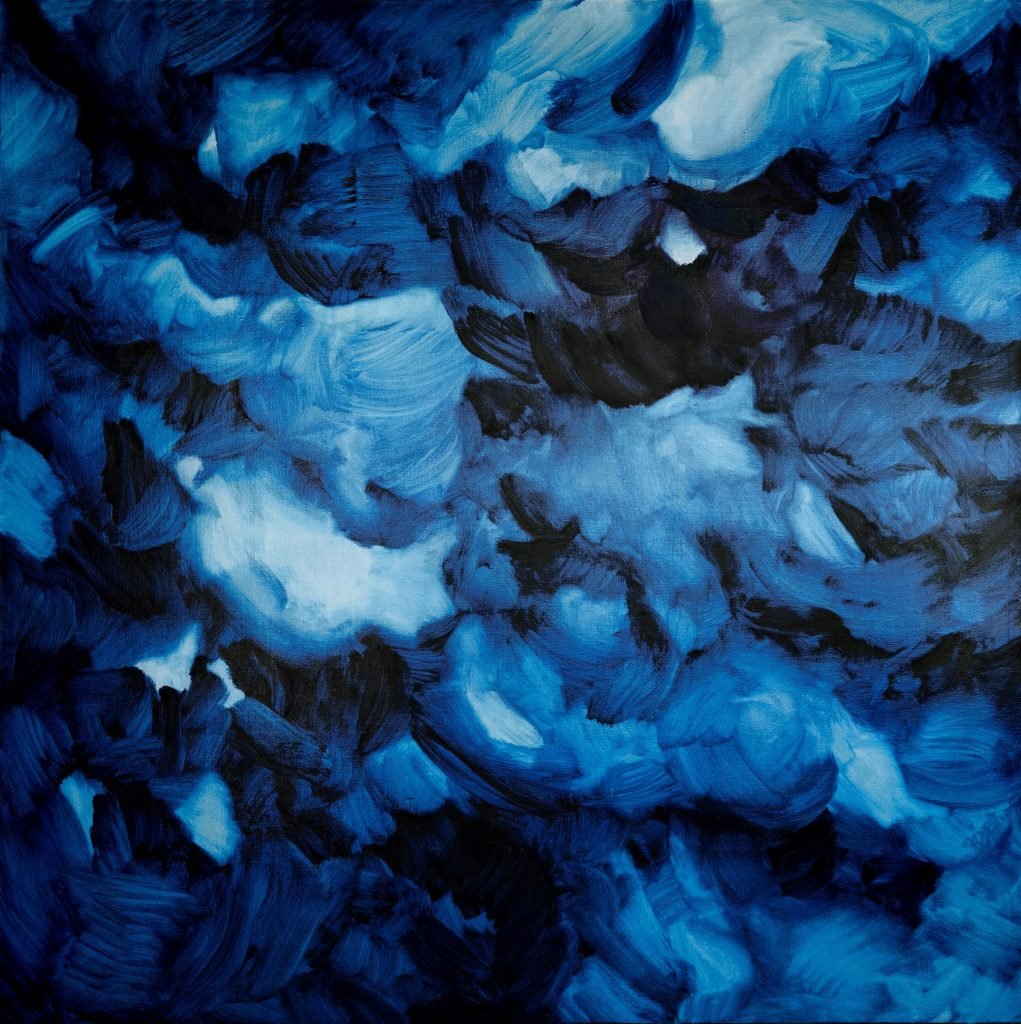
Zhao Zhao, Sky Series 5 (2014–15). Est. $60,000–$80,000.
Zhao Zhao is a leading figure of the post-1980s generation of contemporary Chinese artists. After studying at Xinjiang Institute of Arts in the early 2000s, he worked as a studio assistant to Ai Weiwei until Ai’s arrest in 2011. As a provocative artist himself, Zhao’s own work was confiscated by Chinese authorities in 2012, just ahead of a scheduled New York exhibition.
Zhao’s Sky series has been an ongoing project since 2009 and marks the starting point for his work in painting. Here, the artist references his art-historical predecessors, from realist clouds in ancient Chinese paintings to the ultramarine skies of medieval painting, from John Constable’s studies of clouds to René Magritte’s Surrealist depiction of blue skies. While also pointing to his artistic forerunners, Zhao’s skies also point to the politics of the now and the future, with the bright blue pigmented sky referencing China’s lack thereof, its cities’ atmospheres filled with gray smog.
Artnet Auctions’ Post-War and Contemporary sale closes on May 9; be sure to check out the sale and place your bids.
